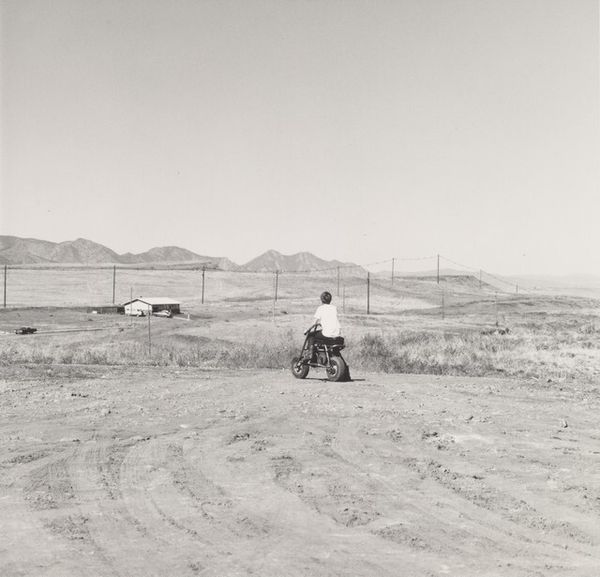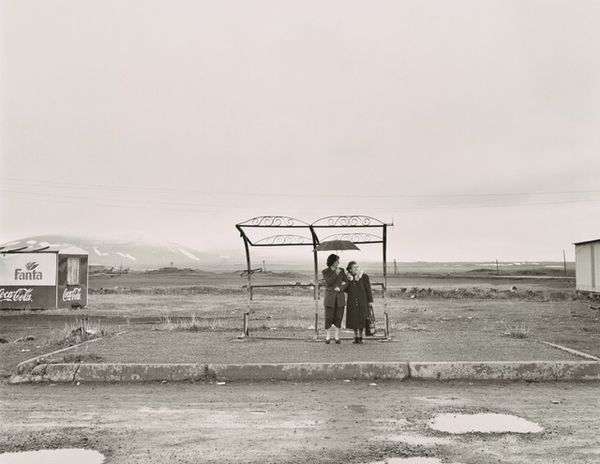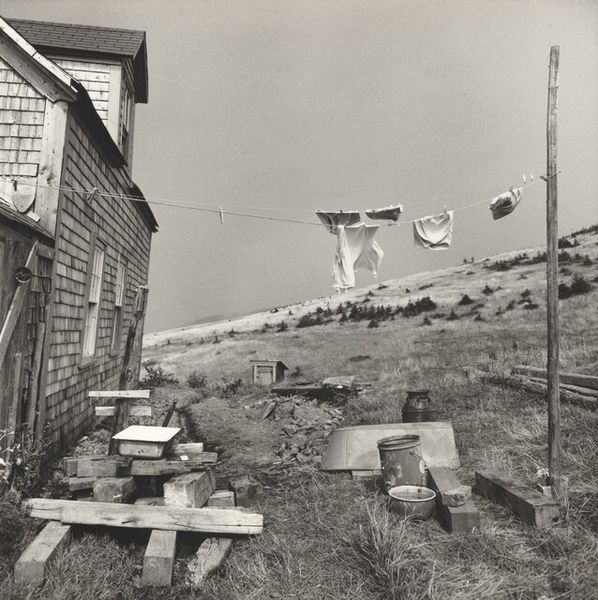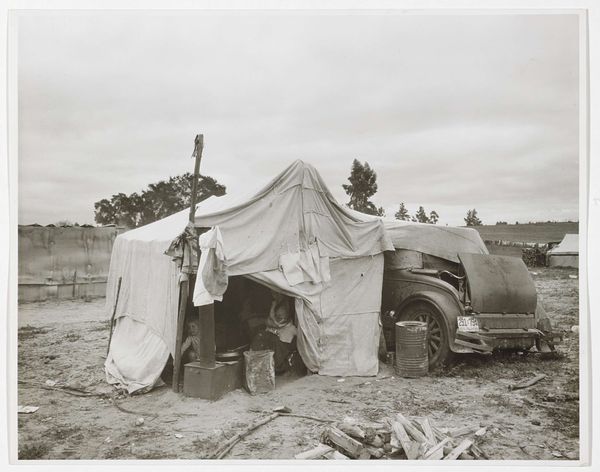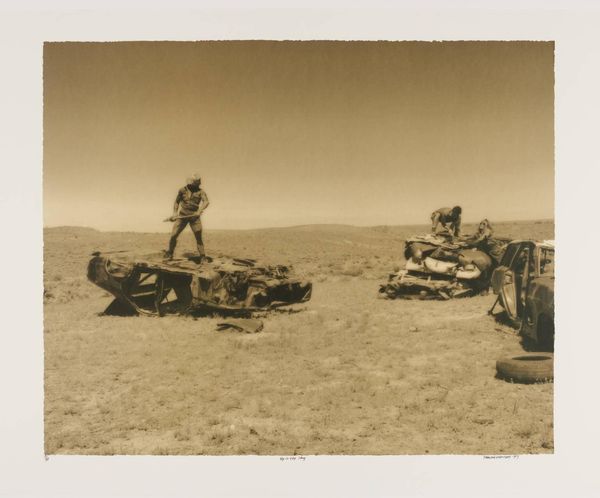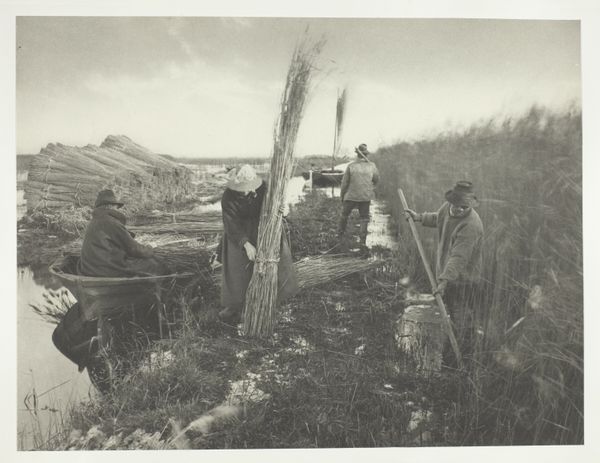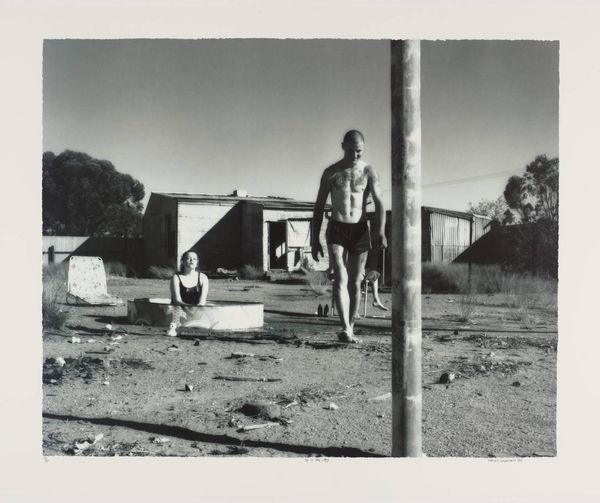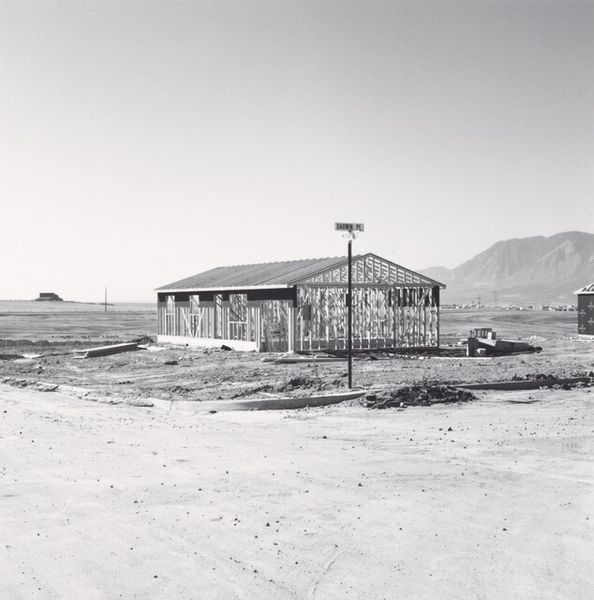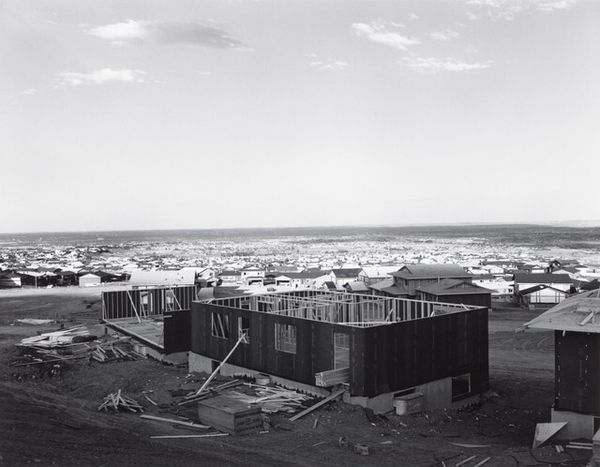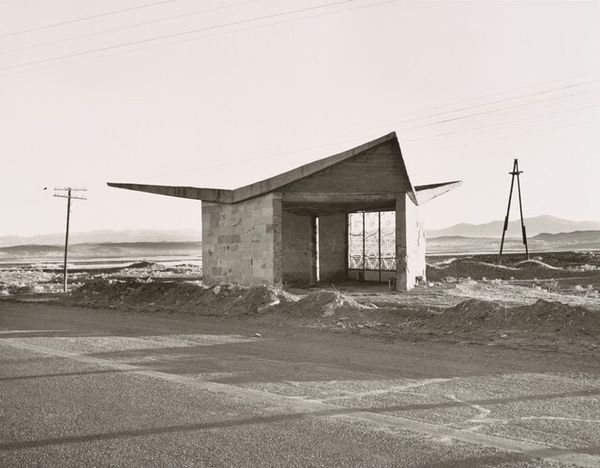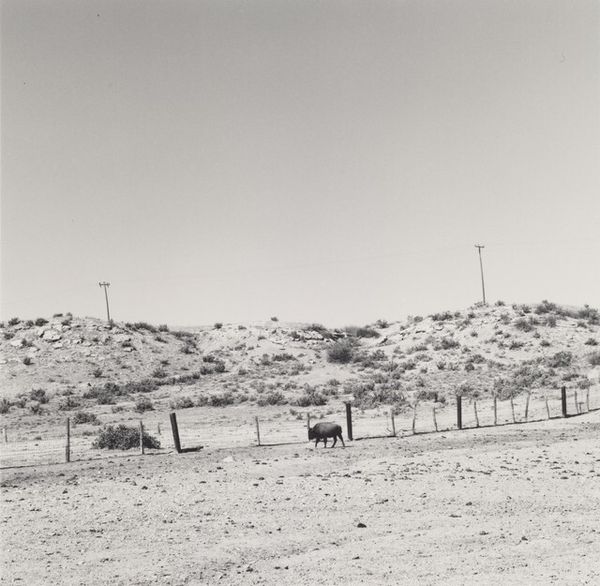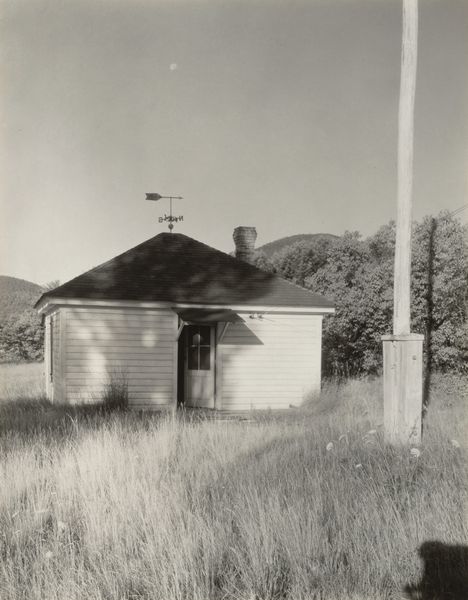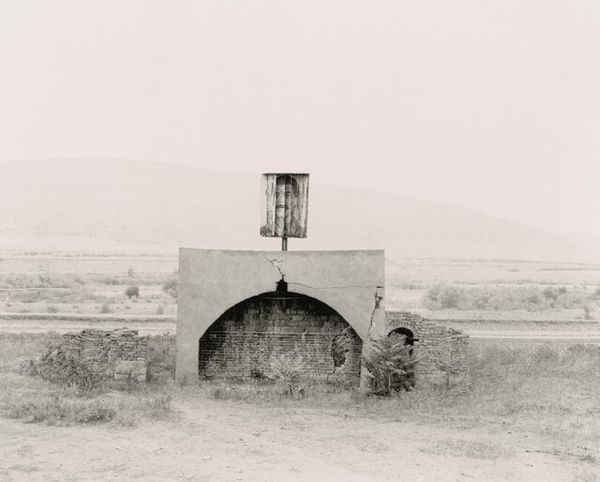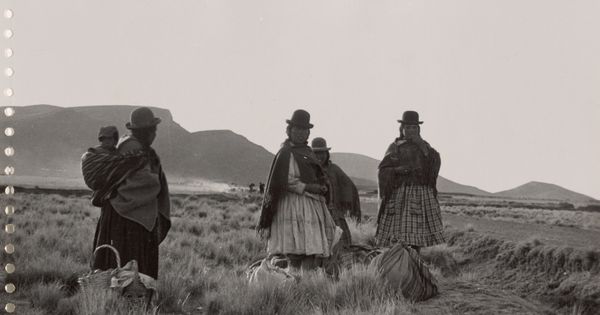
Many farmers are abandoning their homes and moving into dugouts near towns 1936
0:00
0:00
gelatin-silver-print, photography, gelatin-silver-print
#
gelatin-silver-print
#
landscape
#
social-realism
#
photography
#
gelatin-silver-print
#
realism
Dimensions: 7 3/16 x 9 11/16 in. (18.26 x 24.61 cm) (image)7 15/16 x 10 1/16 in. (20.16 x 25.56 cm) (sheet)
Copyright: No Copyright - United States
Curator: Standing before us is Arthur Rothstein’s gelatin silver print, "Many farmers are abandoning their homes and moving into dugouts near towns," taken in 1936. The Minneapolis Institute of Art currently holds it. Editor: What a bleak and compelling scene. The photograph immediately evokes a sense of despair; the stark composition and monotone palette amplifying a profound silence. Curator: Indeed. Rothstein captures the spatial organization of the farm so effectively. Notice how the dugout and the man’s figure create a vertical axis, emphasizing a lonely human presence in an austere landscape. The textural contrast between the smooth sky, rough dwelling, and uneven terrain adds significant depth, directing the gaze strategically. Editor: But let's consider the materials. The subject is sitting on a makeshift chair in front of this flimsy construction; notice the exposed wood, scavenged metal, and patched walls. This starkly reveals a narrative of economic desperation and the labor required for survival amidst scarcity, where every item gains significance and tells of limited resources. Curator: Structurally, the open doorway invites the viewer into the shadowed interior of the home. The diagonal thrust of the electric pole and wire creates dynamism. I think these elements create a visual rhythm, contributing to its narrative. Editor: Exactly, a hand-crafted rhythm, dictated by need. It underscores how fundamental materials reflect broader conditions of scarcity, land management, and their impact on inhabitants. The discarded tire further stresses consumption habits born from need during harsh times. Curator: Yes, the discarded tire certainly functions as a symbol of societal neglect or maybe even failure. The interplay of lines and forms lends itself to an evocative statement about the social realities it presents. The geometric simplicity almost creates a formal abstraction out of these miserable conditions. Editor: Ultimately, Arthur Rothstein's lens exposes far more than just an architectural artifact; he lays bare a lived experience and reminds us of the tangible struggle embedded in creating even the humblest shelter. Curator: In viewing “Many farmers are abandoning their homes and moving into dugouts near towns,” it's plain to see how Rothstein uses the interplay of visual elements to communicate so powerfully, capturing more than mere data of place and instead suggesting a visual poem of distress. Editor: And to reflect on the construction here provides key insights into resourcefulness driven by the socio-economic pressure shaping rural lives of that era.
Comments
No comments
Be the first to comment and join the conversation on the ultimate creative platform.
